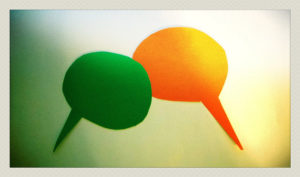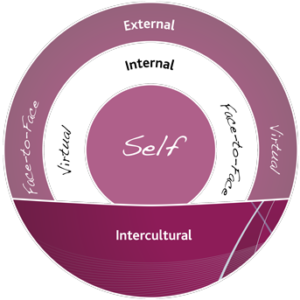Have you experienced any form of tension or difficult communication over the holiday period? If so, this post is for you!
Let me tell you that of course, difficult, tense conversations are a completely natural, normal part of life! Skillful communication is thus not about preventing such situations, it’s about knowing how to handle them when they arise.
To learn new ways to handle challenging situations, we must first become aware of our habitual tendencies. The most common patterns of dealing with conflict are:
- Conflict avoidance: attempting to avoid dealing with the issue at hand; suppression; pretending all is well
- Opposition/Confrontation: attempting to deal with an issue using aggressive behavior, often characterized by a lack of interest or willingness to dialogue
- Passive Aggression: indirect expression of hostility, often accompanied by verbal or other communication that “all is well”
When conflict arises, a cascade of effects run through our nervous system. With a perceived threat, our amygdala is activated and the fight-flight-freeze mechanism is stimulated. Anxiety, fear, anger, defensiveness and a host of other emotions can arise and course through the body. Shifting these responses takes time, and is best accomplished through small, incremental shifts. Over time, we will develop the capacity to stay present, grounded, and make clear choices about our dialogue in tense situations.
Here are three primary ways to handle one’s own reactivity:
- Monitor Activation: Get to know what happens when your nervous system is activated:
- Increased heart rate?
- Fast or shallow breathing?
- Tightening in hands, jaw, or stomach?
- Sweating, feeling hot or cold?
- Grounding: Learn to pause, ground, and track the reactivity in your body:
- Insert a pause in the conversation to re-balance.
- Ground your attention in the body by feeling gravity, your hands, feet, or breath.
- Orient to your surroundings by listening to sounds or looking around.
- Attend to Deactivation: Give some attention to any settling or easing of your experience.
- Pay more attention to the out-breath.
- Feel any sensations of relaxation, release, ease, or settling in the body or breath.
Attending to your own reactivity and judgements by grounding in the body can help us make wiser choices about what to say and when!
Sometimes, in spite of all of our skills and the best of intentions, we reach a point where we can no longer handle our own reactivity. In these instances there are a two things that are essential:
- Know your limit: Learn how to recognize when you are approaching your threshold.
- Honor your limit: Heed those signals and stop before you cross that threshold, hence allowing yourself to take a break!
Taking a break from a conversation involves two parts:
- Affirm the connection: State your desire to stay connected.
- “I’m committed to working this out..”
- Request to stop: Alongside this statement, share your needs for a break:
- “… and, I’m not sure anything else I say will be useful now so I’d like to take a break. Is that alright with you?”
Happy New Year!
Jenny














